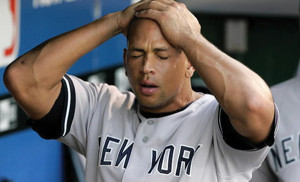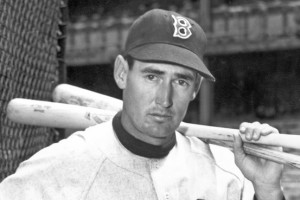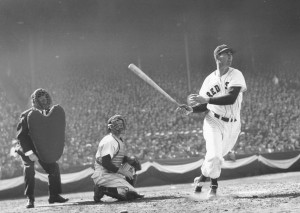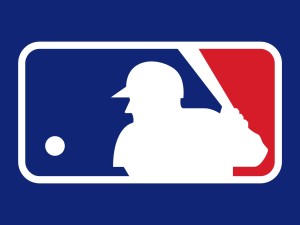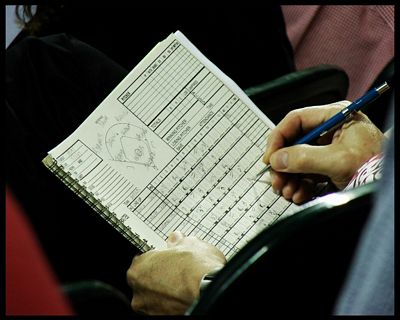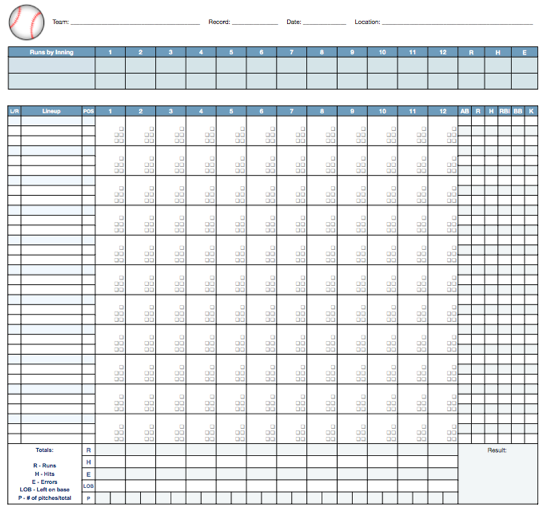Posted on
February 06, 2014 by
Joe Gill
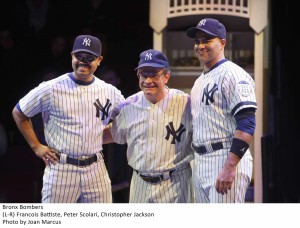 Most people know Peter Scolari from some of his older work on TV shows like “Bosom Buddies,” or that old New England favorite “Newhart,” or younger people know him as the dad in HBO’s popular series “Girls.” Theater goers may know him from his recent role in “Lucky Guy” with longtime colleague Tom Hanks. However sports fans, even those in Boston, may know him for the crack Red Auerbach role he played in “Magic/Bird,” and now as gasp, a Yankee, playing Yogi Berra in the new play that opens in New York this week, “Bronx Bombers.”
Most people know Peter Scolari from some of his older work on TV shows like “Bosom Buddies,” or that old New England favorite “Newhart,” or younger people know him as the dad in HBO’s popular series “Girls.” Theater goers may know him from his recent role in “Lucky Guy” with longtime colleague Tom Hanks. However sports fans, even those in Boston, may know him for the crack Red Auerbach role he played in “Magic/Bird,” and now as gasp, a Yankee, playing Yogi Berra in the new play that opens in New York this week, “Bronx Bombers.”
Why would those around Boston flock to New York to see a play about the Yankees?
We asked Scolari, who has some surprising answers that may be of interest.
The new play is about the Yankees, why would those fans in Boston be interested?
PS: Well, the first act actually takes place in a Boston hotel, the day after the famous 1977 game where Billy Martin pulled Reggie Jackson out of the game. Yogi Berra, my character, summons the parties together to try and solve what’s wrong with the team, and as you can imagine it is quite chaotic, so some Red Sox fans should revel in that memory.
You grew up a Yankees fan but did follow the Red Sox for quite a while correct?
PS: That is right. During my teen years and into my early ‘20’s the Yankees were not what they were later on, and I loved the Red Sox of the late 1960’s’ Yaz and Tony Conigliaro and Jim Lonborg had such a great run, they were so much fun to watch I was really taken by them and followed them religiously.
Your dad actually had some pretty strong baseball ties as well?
PS: yes that how I really came to love baseball. He was an accomplished player when he was young, an All-American shortstop at Drew University in New Jersey, and then he became an attorney and represented several athletes, including Rocky Graziano and Elston Howard, in some business dealings, so I always had a love for the game. It’s also ironic because Elston is one of the players who comes back to life in the second act of the play to help Yogi fix the Yankees.
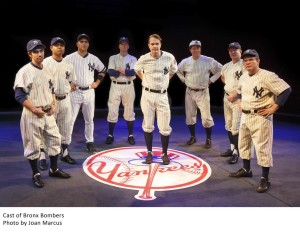 Did you get to meet Yogi?
Did you get to meet Yogi?
Yes, actually during the World Series, he and I and my wife, who plays Carmen Berra (Tracy Shayne), sat and watched one of the Red Sox-Cardinals games together and talked about his time with the team and where the game is today. It was quite an amazing evening and a great help in forming the character.
How is the role of Yogi different or similar to that of playing Red Auerbach?
PS: I loved playing Red, and some of that yelling he was famous for comes out in my Yogi portrayal, as he was not always the quiet guy that most people see; he has a very strong personality and that comes across in the play. They were both strong leaders, and had the respect of everyone around them and were very, very driven to win and were highly successful. I think that is probably the trait that comes across in both.
It’s a Yankees play, but is it for other fans as well?
PS: I think so, because it shows how teams and personalities can help lift us to new heights. By the way Babe Ruth is also in the play, and we know where he started as well, so there is another tie to Boston, albeit probably not a great one for red Sox fans, and Derek Jeter is in the play, who I believe has the respect of Red Sox Nation as well. The story is really about the beauty of the game and its personalities more than wins and losses, and it has great lessons for fans of all ages, so I think people can relate to it no matter who they root for. It’s not as much a Yankees play as it is a play about overcoming obstacles and dealing with life’s curveballs.
Any plans on maybe a hockey play down the line for you?
Hey maybe I can play Don Cherry somewhere…right now we are hoping for a long run with “Bronx Bombers,” and I will continue the work with “Girls,” that’s good for me right now.
